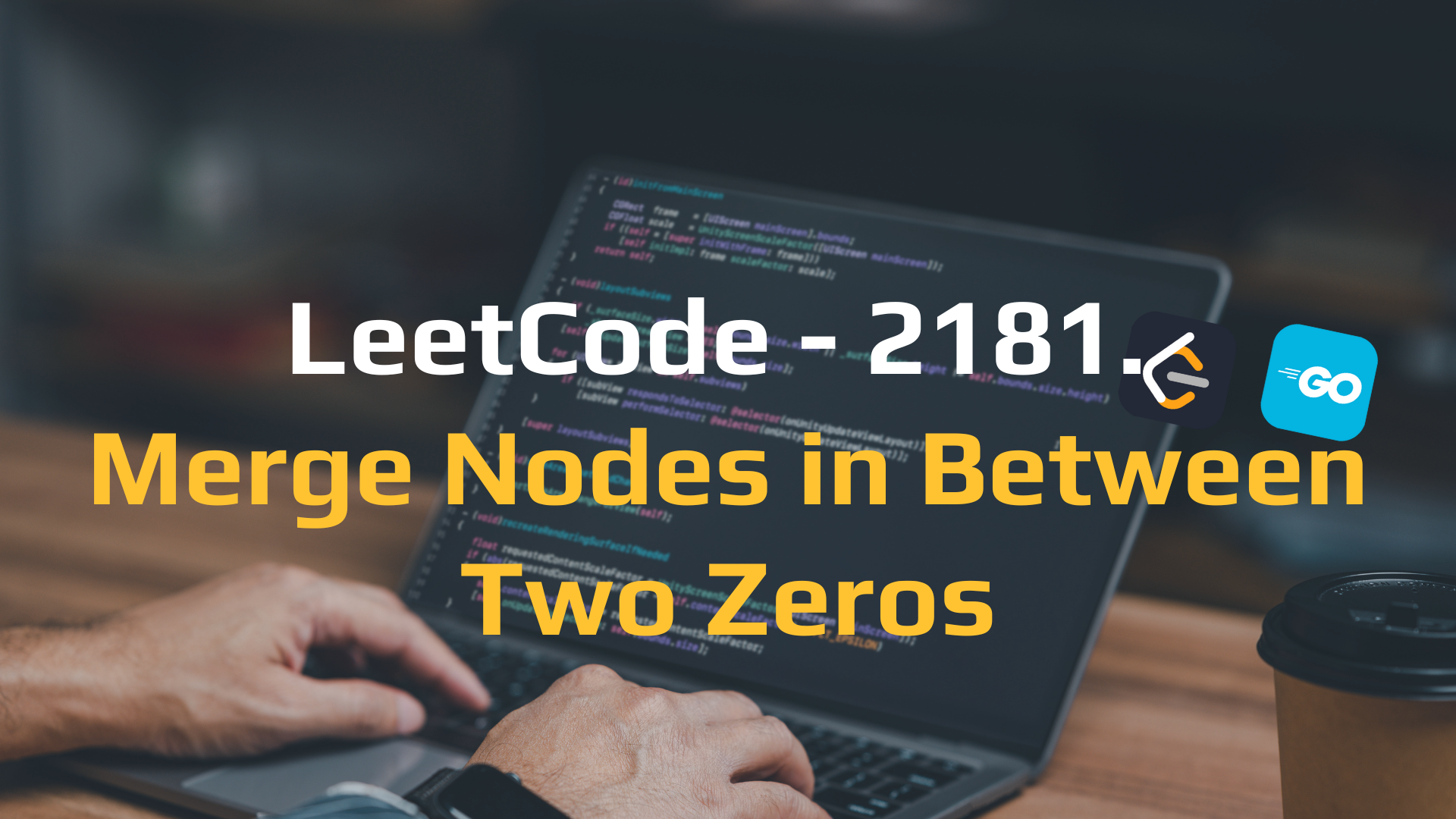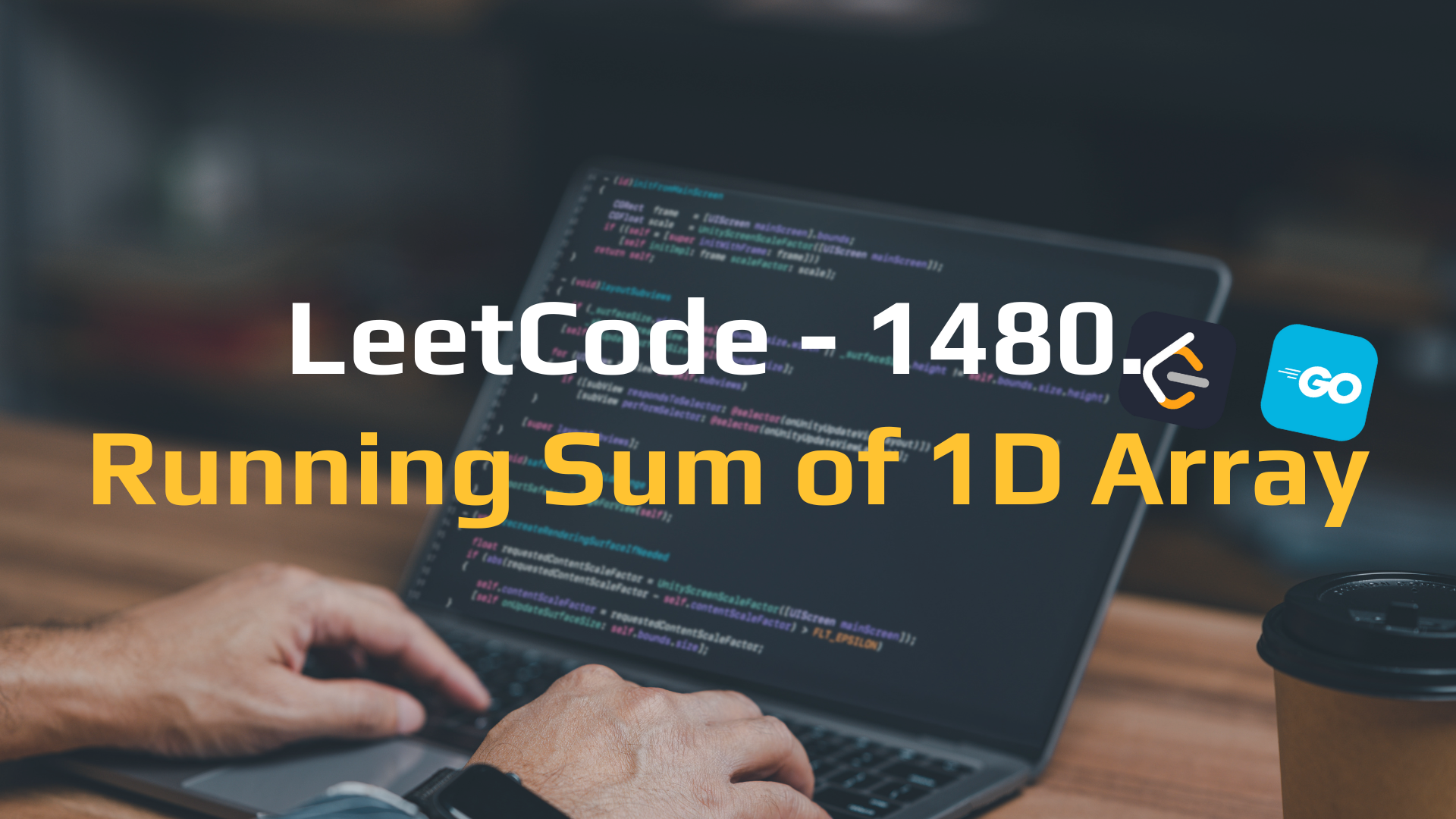
💯✅ LeetCode 2181. Merge Nodes in Between Zeros | Go

Link 👉🏻 2181. Merge Nodes in Between Zeros
Description
You are given the head of a linked list, which contains a series of integers separated by 0‘s. The beginning and end of the linked list will have Node.val == 0.
For every two consecutive 0‘s, merge all the nodes lying in between them into a single node whose value is the sum of all the merged nodes. The modified list should not contain any 0‘s.
Return the head of the modified linked list.
Example 1:

- Input: head = [0,3,1,0,4,5,2,0]
- Output: [4,11]
- Explanation:
The above figure represents the given linked list. The modified list containsThe sum of the nodes marked in green: 3 + 1 = 4.The sum of the nodes marked in red: 4 + 5 + 2 = 11.
Example 2:

- Input:
head = [0,1,0,3,0,2,2,0] - Output:
[1,3,4] - Explanation:
The above figure represents the given linked list. The modified list containsThe sum of the nodes marked in green: 1 = 1.The sum of the nodes marked in red: 3 = 3.The sum of the nodes marked in yellow: 2 + 2 = 4.
Constraints:
- The number of nodes in the list is in the range
[3, 2 * 105]. 0 <= Node.val <= 1000- There are no two consecutive nodes with
Node.val == 0. - The beginning and end of the linked list have
Node.val == 0.
Linked List, Simulation
Intuition
We realize the first and last nodes of the linked list are always 0. We can iterate through the head linked list and merge the nodes between two 0‘s. Therefore, we caculate the sum of the nodes between two 0‘s when we iterate through the linked list. If we encounter a 0, we update the value of the next node and move the pointer to the next node.
Approach
- Initialize the
sumvariable to0and thenpointer to the second node. - Iterate through the linked list starting from the second node. (Because the first node is always
0.) - Add the value of the current node to the
sumuntil we encounter a0. - When we encounter a
0, update the value of the next node tosumand move the pointer to the next node. Reset thesumto0. - Continue the iteration until we reach the end of the linked list.
- Return the head of the modified linked list.
Complexity
Time complexity:
Space complexity:
Code
1 | /** |
Code Walkthrough
Take head = [0, 3, 1, 0, 4, 5, 2, 0] as an example, let’s go through the code step-by-step with the provided input.
Initial Setup
headpoints to the first node (value 0).npoints to the second node (value 3).sumis initialized to 0.
Iteration 1
curpoints to the second node (value 3).Since
cur.Valis not 0, addcur.Valtosum:1
sum = 0 + 3 = 3
Iteration 2
Move
curto the third node (value 1).Since
cur.Valis not 0, addcur.Valtosum:1
sum = 3 + 1 = 4
Iteration 3
Move
curto the fourth node (value 0).Since
cur.Valis 0, updaten.Valand moven:1
2
3
4n.Val = sum = 4
n.Next = cur.Next (points to node with value 4)
sum = 0
n = cur.Next (points to node with value 4)The linked list now looks like this:
[0, 4, 4, 5, 2, 0]
Iteration 4
Move
curto the fifth node (value 4).Since
cur.Valis not 0, addcur.Valtosum:1
sum = 0 + 4 = 4
Iteration 5
Move
curto the sixth node (value 5).Since
cur.Valis not 0, addcur.Valtosum:1
sum = 4 + 5 = 9
Iteration 6
Move
curto the seventh node (value 2).Since
cur.Valis not 0, addcur.Valtosum:1
sum = 9 + 2 = 11
Iteration 7
Move
curto the eighth node (value 0).Since
cur.Valis 0, updaten.Valand moven:1
2
3
4n.Val = sum = 11
n.Next = cur.Next (points to nil, end of the list)
sum = 0
n = cur.Next (points to nil)The linked list now looks like this:
[0, 4, 11]
End
curis nownil, so the loop ends.- Return
head.Next, which is the new head of the merged linked list.
Final Output
The output linked list is: [4, 11]
Step-by-Step Visualization
- Start:
[0, 3, 1, 0, 4, 5, 2, 0] - After Iteration 3:
[0, 4, 4, 5, 2, 0] - After Iteration 7:
[0, 4, 11]
The final merged linked list is: [4, 11]

![[O(1) Time and Space] LeetCode 1791. Find Center of Star Graph - Easy Solution | Go](/images/cover/leetcode/1791-find-center-of-star-graph.png)
